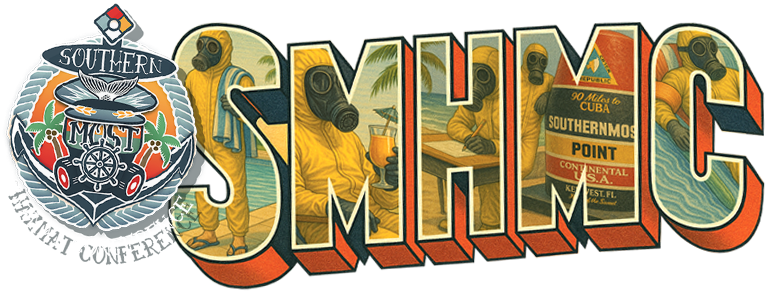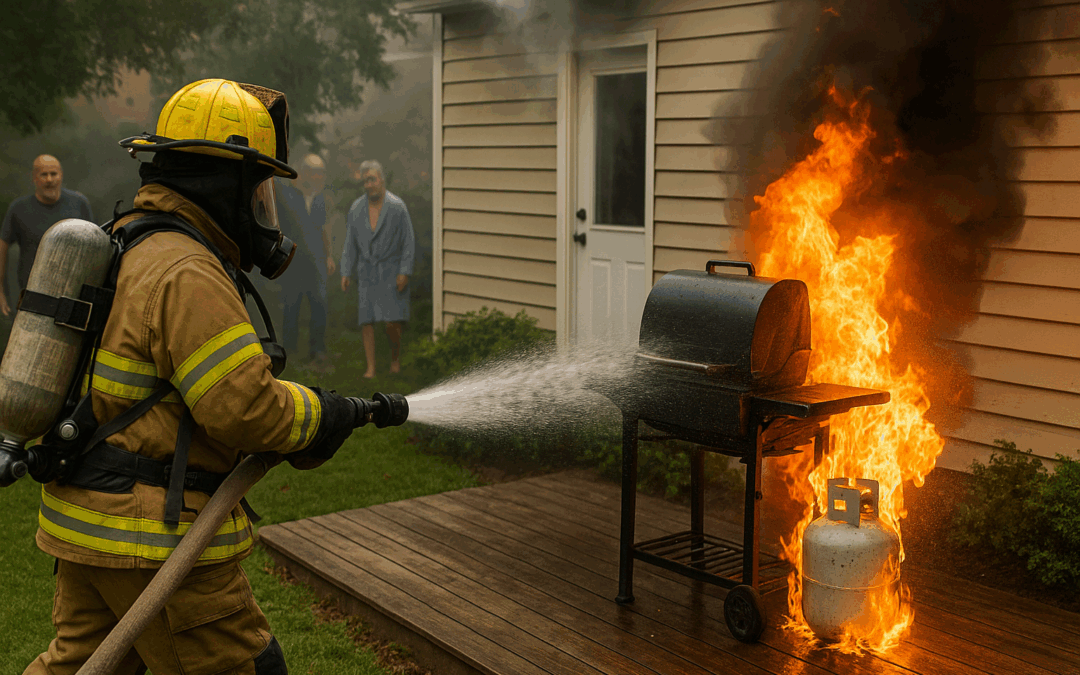What Happens When the Barbecue Goes Boom?
Picture this: you roll up on a wood-frame house with smoke rising in the backyard. The street’s full of panicked neighbors, some waving you around like a third-base coach, others stumbling drunk in bathrobes. There’s a propane tank actively on fire beneath a closed barbecue grill sitting two feet from the house. This isn’t a drill. It’s the start of a propane fire scenario that Mike Monaco and I, Bobby Salvesen, recently walked through in raw, unscripted fashion on our podcast.
And let me be clear: we didn’t rehearse. We just riffed, imagined, and broke down what we’d do in the real world.
Don’t Moth-to-Flame It
So the engine rolls up. You’re on it. What do you do? A rookie might sprint around the house toward the fire. But Mike brings up the smarter play: go through the building first.
Why? You want to see if the fire has extended inside. Protect the structure before the backyard chaos. If it hasn’t gotten in yet, you can open up that back door and hit the tank from a safe interior position. Cool the house, cool the soffit, cool the exposures – and do it with a fog pattern.
“I want to get close enough to see what’s actually on fire,” Mike says. If the tank is burning clean from the PRD, great. Let it. That beats an uncontrolled leak igniting under the deck later.
Size of the Fight
What kind of line are we pulling? It’s residential, so we’re not rolling out the big guns. Mike goes with an inch-and-three-quarter line, starting with a straight stream and moving to fog once things are in view.
And we’re not going heavy with water. This is a finesse game. Spritz and sweep, staying back 15 to 20 feet. You’re not trying to knock the fire out; you’re keeping the tank cool and the house intact.
The Booster Tank Gamble
Can you do this with a booster tank? Sure, for the first push. Mike says, “Use that 500 gallons wisely.” Quick water buys you time and control. But know you’ll need a hydrant or secondary source real soon.
What About the Truck Guys?
This is where things get interesting. Bobby and I went back and forth: do you use the truck to open the barbecue doors? Pull the whole thing off the deck? If that grill is on wheels and not built-in, maybe you can move it. But only under the right conditions.
“If that PRD isn’t venting and we’ve got a good line on the headspace, I feel okay telling the truck company to move it,” Bobby says. And it’s not about heroics – it’s about minimizing exposure.
Mike agrees: “If I’m 20 feet away spraying it, and you’re standing next to me, what’s the real difference in risk?”
The PRD Test
The PRD (pressure relief device) tells you a lot. If it’s venting, that tank’s hot. If you’re cooling it and it’s still burping gas, either the PRD is defective or you’re not cooling effectively.
“Don’t start throwing three or four lines at it,” Mike says. “You might knock it over. It’s probably not a water problem. It’s a valve problem.”
And if that PRD is malfunctioning? That’s a technician-level job. Call hazmat. Call the big brains.
Putting the Fire Out
Okay, now you want to shut this thing down. Are we just going in with a wrench and a smile? Not quite.
If the fire is steady and low and you can confirm it’s not a PRD issue, maybe. You hit it with water, keep it cool, and have a guy twist the knob closed. But again, this has to be something your department trains for. If you’re not equipped or practiced, don’t ad-lib.
“This is a task-based hazmat operation,” Bobby says. “Like sending an ops-level guy with a CO meter. You train them, give them the tool, and send them in.”
Final Thoughts: It’s About Judgement
This episode wasn’t about SOPs or rulebooks. It was about judgment. It was two guys talking through what they would do, based on years of showing up to bad situations and making good calls.
We want more departments thinking like this. Less checkbox firefighting, more problem solving.
So what would you do if that barbecue tank was whistling at you?


